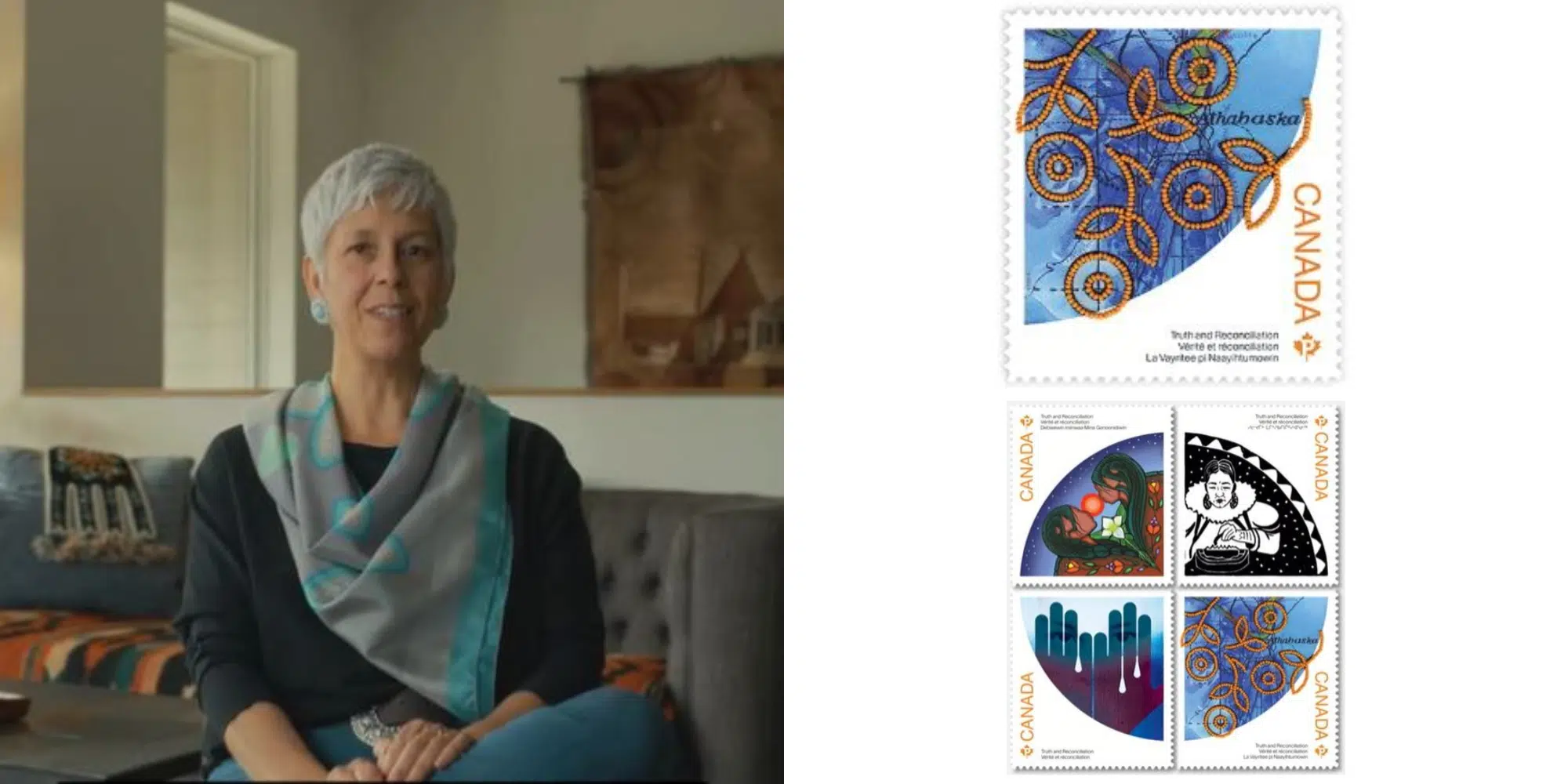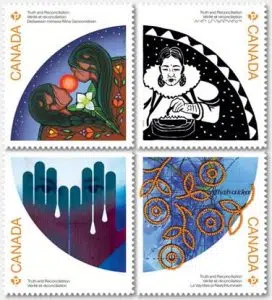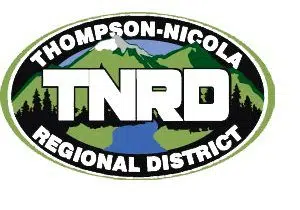
A Métis woman living just outside of Kamloops has had her artwork featured on one of Canada Post’s four new stamps showcasing the visions of First Nations, Inuit, and Métis artists for the future of truth and reconciliation.
Kim Gullion Stewart, who lives on Pinantan Lake, explains the artwork on the stamp she designed is based off a painting she did of a map from 1904.

“That map is an economic development map for the area around Athabasca, Alberta which is where I was born, my father was born, and his father before him was born there, so we are very connected to the land there,” she said, on the NL Noon Report.
On top of the map, there is floral beadwork, something Gullion Stewart says is a very common technique in Métis creative art.
“We are known as the flower beadwork people,” she said.
“The flowers I put overtop are to remind us that the land is a living ecosystem and as such it should also be considered from a stewardship point of view rather than only an ownership or economic point of view.”
Gullion Stewart says it was heartwarming to have her artwork on a stamp representing Métis history.
“I was very honoured to be asked to be the Métis voice in this circle of four stamps, there is a First Nations, Inuit, Métis and settler stamps,” she said. “It was a huge responsibility to be able to speak on behalf of Métis people and create this image.”
In her art, she says she likes to uncover the depths of her Métis identity and learn Métis knowledge systems that have been hidden, lost, or adapted as a survival mechanism.
Gullion Stewart suggests her work is inspired by Louis Riel, a Métis leader from 1844 to 1885, someone many Metis people look up to.
“He was well educated in regards to the land they had been living on in Red River, which is where my family is connected to,” Guillion Stewart said.
“Unfortunately, he was misunderstood and things got out of hand; and in the end, he lost his life, and was labeled a traitor to Canada. So growing up as a Métis person, often if you told people you were Métis, they would think of you as a traitor to Canada,” she added.
“So my family, and specifically my father, told me and my brother ‘please don’t tell anybody about our heritage,” Guillion Stewart said.
“And that is very common for Métis people, a lot of either don’t know about their heritage or have hidden it for many years, and that is the reason why.”
Canada Post’s stamp issue is the first in an annual series for the National Day of Truth and Reconciliation, encouraging awareness and reflection on Canada’s residential schools and the need for healing.
Métis artist Kim Gullion Stewart places beaded flowers over the contour lines of a map as a reminder of the need to live symbiotically with the land, nature and each other. Learn more: https://t.co/F3dRp3xtdV #NDTR #TruthAndReconciliation pic.twitter.com/ew3h8S72ns
— Canada Post (@canadapostcorp) September 29, 2022














